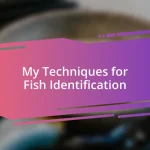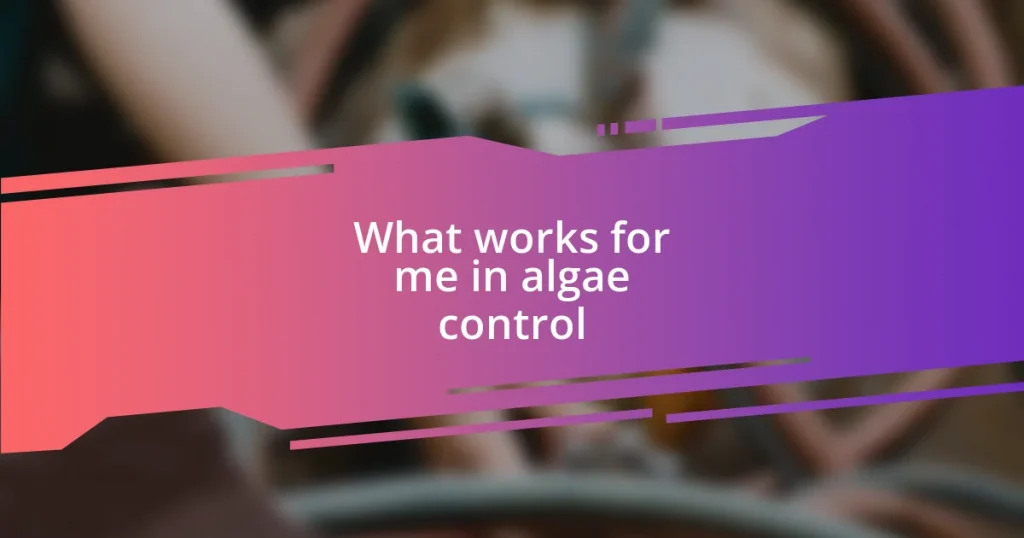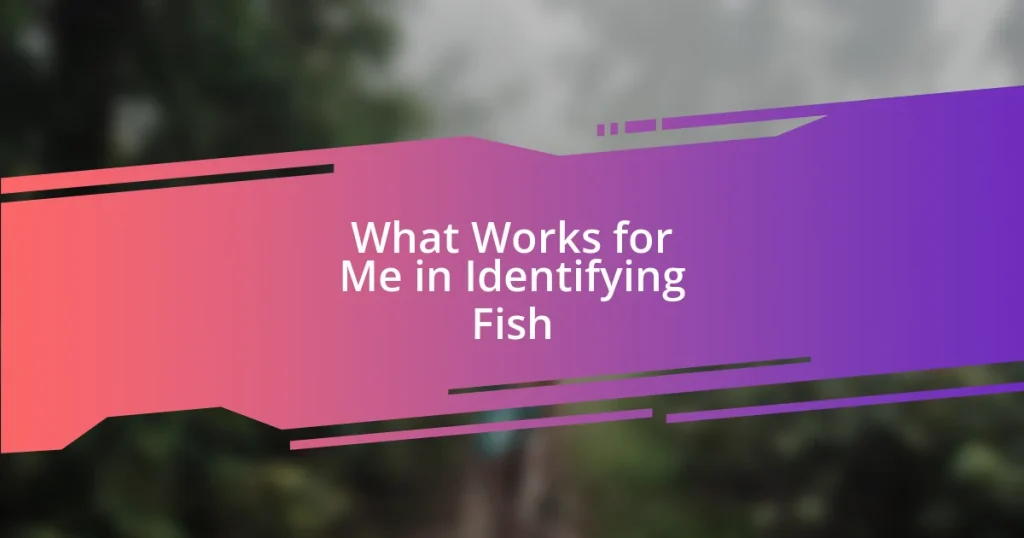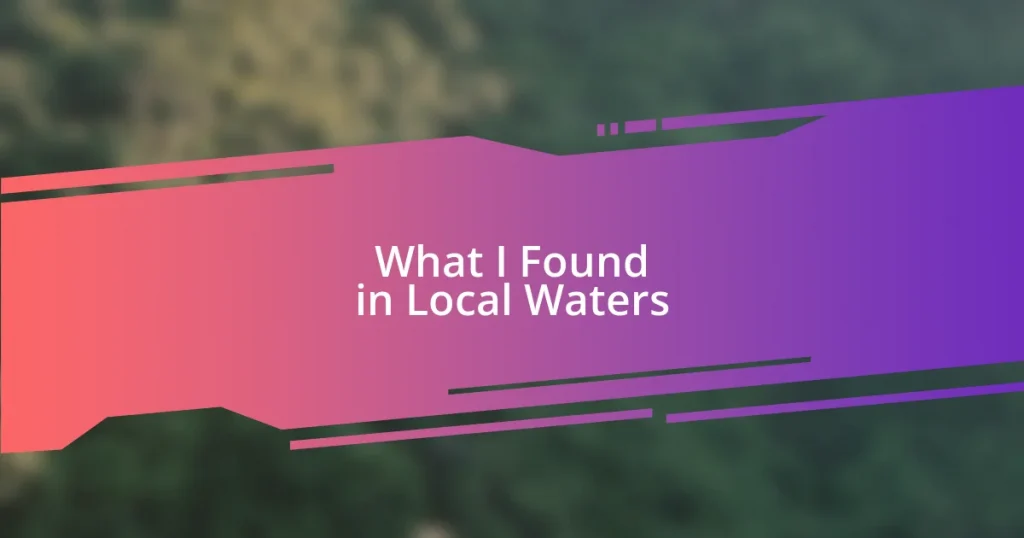Key takeaways:
- Algae growth is often driven by excess nutrients, light, and temperature, with gardening practices directly impacting aquatic ecosystems.
- Effective algae management includes reducing nutrient inputs, using biological controls like beneficial bacteria, and diversifying aquatic plant life.
- Regular monitoring of water clarity and nutrient levels, coupled with evaluating control methods, is essential for maintaining a healthy aquatic environment.
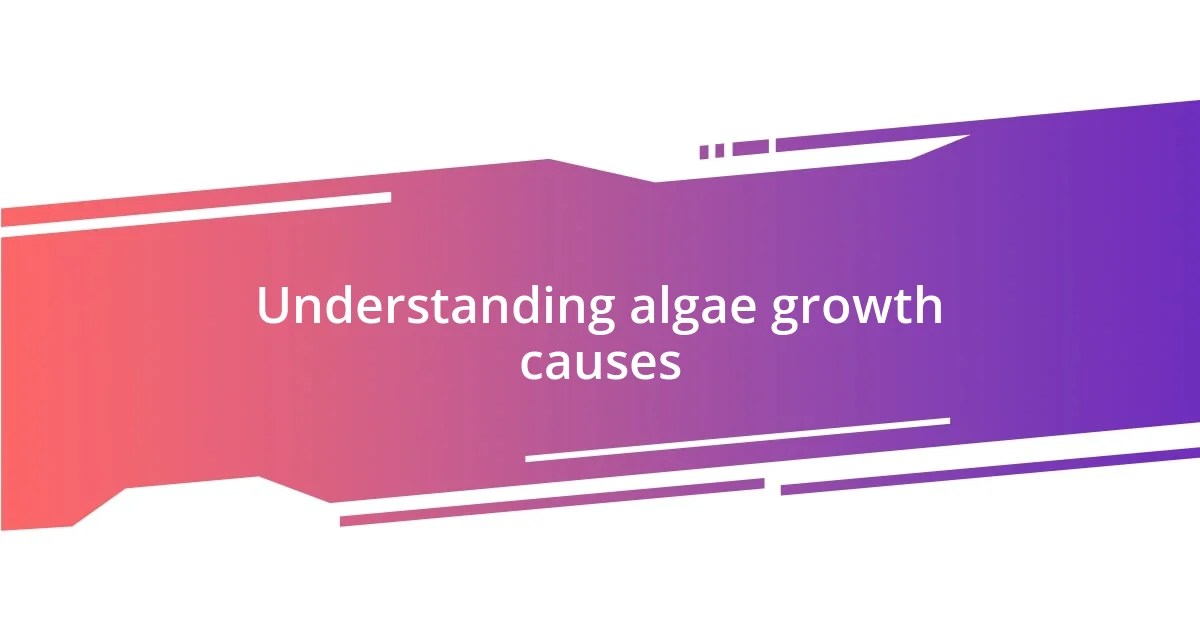
Understanding algae growth causes
Algae growth often stems from an abundance of nutrients, particularly nitrogen and phosphorus. I remember the first time I noticed a green film on my pond’s surface after fertilizing my garden. It hit me that our gardening habits can directly impact the water ecosystems we cherish. Have you ever thought about how your lawn care choices might affect your local waterways?
Light is another significant contributor to algae proliferation. In my experience, shaded areas tend to have less algae compared to sun-drenched spots. One summer, I moved some of my aquatic plants to create more shade in my pond, and the change was astonishing—the algae growth drastically decreased! How fascinating is it that something as simple as plant placement can alter the balance of an entire ecosystem?
Temperature also plays a vital role in algal bloom patterns. I’ve noticed that during warmer months, it seems like my pond is on a fast track to turning green. It makes me wonder: could small changes, like introducing shade or altering water circulation, help maintain better temperatures and ultimately keep algae in check? Understanding these causes helps us find more effective strategies for managing algae growth.

Best practices for controlling algae
Effective algae control starts with proactive practices that balance nutrient levels. One of my go-to strategies is monitoring and adjusting the nutrient inputs in my garden. I vividly remember a time when I switched to organic fertilizers. The outcome was remarkable—not only did my plants flourish, but my pond also experienced significantly reduced algae growth. Have you tried reassessing what you put in your garden? It might just be the key to improved water quality.
Another practice I swear by is introducing biological controls, like beneficial bacteria. I recall the first time I used a bacterial product in my pond; the transformation was surreal. The water clarity improved, and the algae struggle diminished. By creating a competition for nutrients, these beneficial organisms work tirelessly beneath the surface. It’s fascinating how nature has its own methods for balance, isn’t it?
Lastly, maintaining a diverse aquatic plant life has been a game changer for my algae control efforts. I added a variety of native plants to my pond, which not only enhanced its beauty but also outcompeted algae effectively. It was like watching a natural battle unfold, with the plants rising to the occasion. Have you thought about diversifying your plant selections? This biodiversity doesn’t just improve aesthetic appeal; it transforms the ecosystem, making it more resilient against algae.
| Practice | Description |
|---|---|
| Reduce Nutrients | Monitor and adjust fertilizer use to lower nutrient input. |
| Biological Controls | Introduce beneficial bacteria to outcompete algae for nutrients. |
| Diverse Plant Life | Add native aquatic plants to enhance biodiversity and shade. |
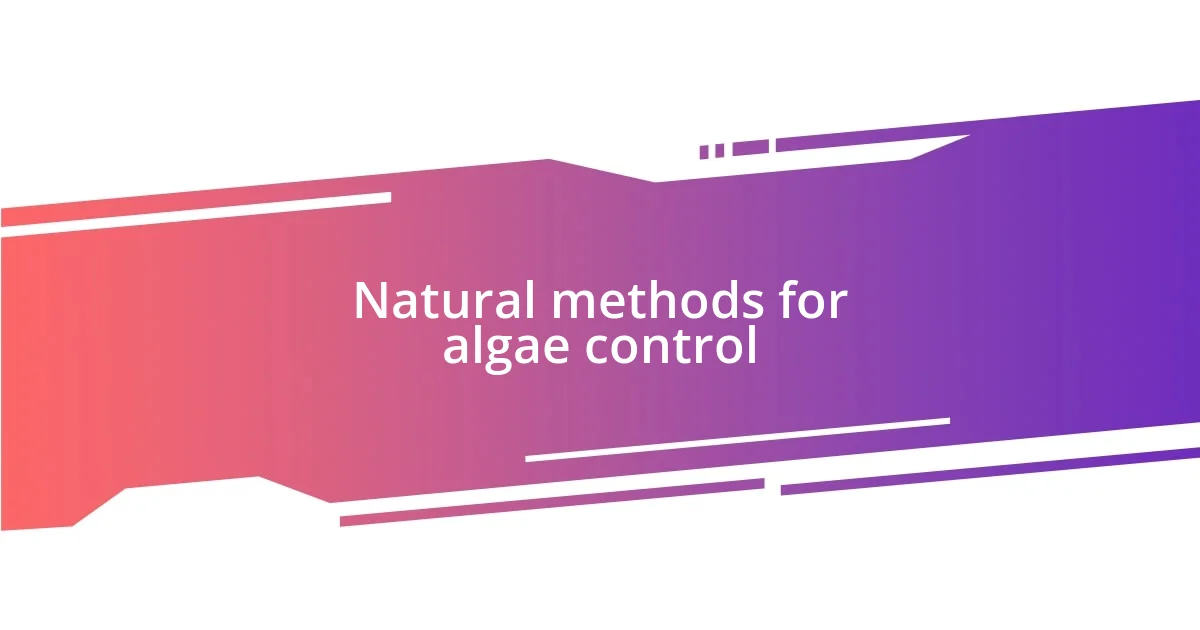
Natural methods for algae control
Natural methods for controlling algae can be both effective and rewarding. I’ve discovered that incorporating certain natural elements can make a significant difference in keeping algae at bay. For instance, I once experimented with adding barley straw to my pond. Initially skeptical, I quickly became a believer when I noticed how it helped clarify the water while simultaneously reducing algae. There’s something magical about nurturing an environment that thrives on nature’s own solutions.
Here’s a list of a few natural methods I’ve found helpful:
- Barley Straw: Helps to control algae by releasing compounds as it decomposes, which can inhibit algal growth.
- Adding Fish: Consider introducing herbivorous fish, like koi or goldfish. They love munching on algae and can keep those levels in check!
- Water Lilies: Their broad leaves provide shade and reduce light penetration, hindering algae growth. Plus, they look stunning!
- Competitor Plants: I love using fast-growing submerged plants. They compete directly with algae for nutrients, effectively starving the unwanted growth.
Simply put, finding balance in your ecosystem can lead to astonishing results. It’s like finding the missing piece to a puzzle that brings the whole picture together beautifully.
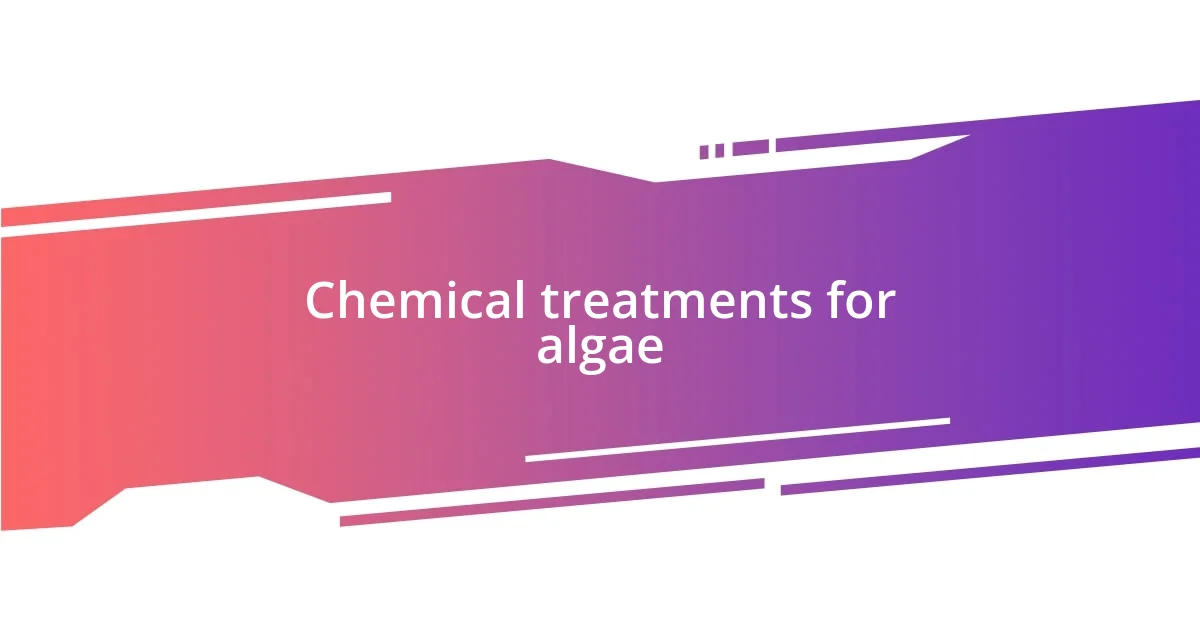
Chemical treatments for algae
Chemical treatments can be a handy tool in the battle against algae, especially when preventive measures fall short. I remember a particularly stubborn algae bloom in my fish tank that resisted all my natural attempts to clear it. That’s when I decided to try a commercially available algaecide. The relief I felt watching the algae dissipate over a few days was profound. It’s mesmerizing how effective the right chemical treatment can be when used properly.
When using chemical treatments, it’s crucial to follow the instructions carefully. The first time I applied an algaecide, I was a bit hesitant and applied less than recommended, hoping to be gentle. Instead of controlling the algae, I only delayed the inevitable. Once I learned to dose correctly, I saw the best results. Have you ever found that sometimes you have to just trust the process and follow the product guidelines?
Of course, while chemical treatments can be effective, I’ve also learned the importance of balancing them with ecological considerations. I once treated a larger water feature with a strong algaecide, and while it worked wonders on the algae, I noticed a temporary dip in the fish population’s activity. It made me think about the ripple effects of our actions. How have your experiences shaped your approach to chemical solutions? I truly believe that using chemicals should be a part of a broader, well-thought-out strategy that respects the entire ecosystem.
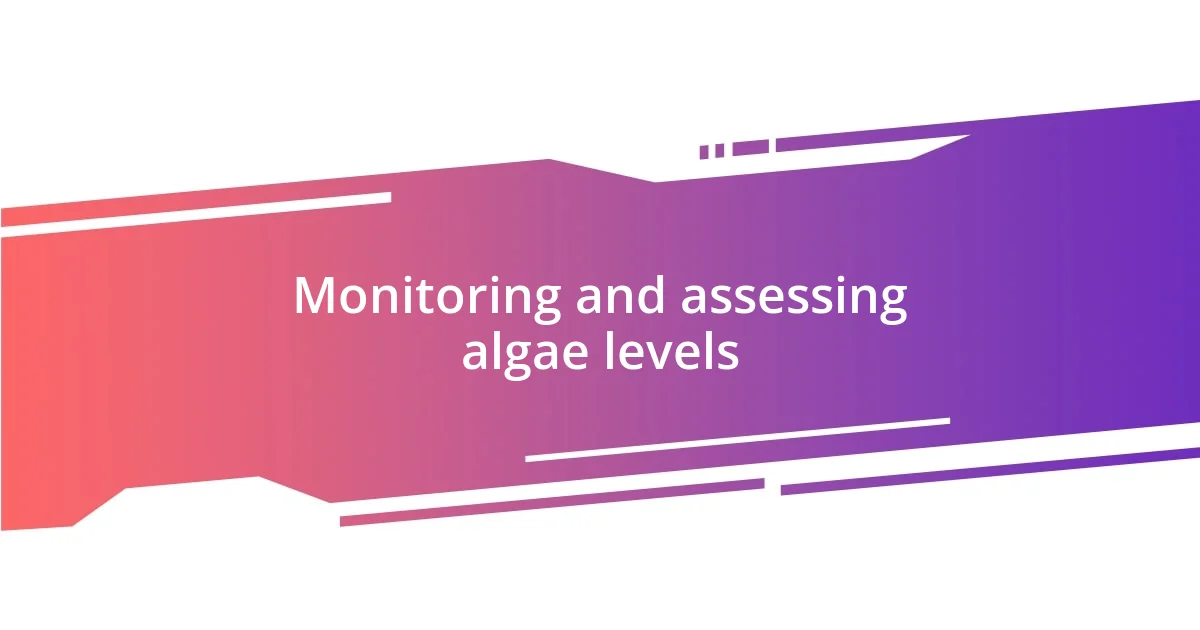
Monitoring and assessing algae levels
Monitoring algae levels is essential to maintaining a healthy aquatic environment, and I’ve learned that simple observations can go a long way. For instance, I regularly check the water’s clarity and color. If the water appears murky or greenish, it’s often a sign that algae levels are on the rise. Doesn’t it feel reassuring to take proactive steps instead of waiting for a problem to escalate?
I also invest time in checking nutrient levels in the water, especially nitrates and phosphates, which can fuel algae growth. There have been moments when I used test strips, and it was eye-opening to see how small adjustments—like reducing fertilizer runoff—could help. Have you ever tested your water and been surprised by the results? I certainly was, and it made me more vigilant about my water management practices.
Lastly, regular visual assessments around my pond or tank help keep algae in check. During my evening stroll by the pond, I sometimes spot early signs of algal blooms. When I do, I feel a mix of responsibility and urgency, knowing that a tiny change can lead to significant outcomes. Trusting your instincts and eyes can be just as important as any scientific test. How do you visualize the health of your aquatic space? The connection you form with the water can profoundly influence your algae management strategies.

Evaluating control methods effectiveness
Evaluating the effectiveness of various algae control methods often requires a mix of observation and data collection. I’ve found that keeping a detailed journal of my algae treatments has been invaluable. For example, after trying an eco-friendly solution like barley extract, I noted how long it took to see results compared to when I used traditional algaecides. Isn’t it interesting how writing things down can bring clarity?
Additionally, I always compare the outcomes of different methods side by side. There was one summer when I implemented a combination of UV sterilization and manual removal. Watching the algae slowly decline while keeping my fish healthy was a rewarding experience. Have you ever tried a multi-faceted approach? I tend to feel that using multiple strategies not only gives me a better picture of what works but also adds an element of reassurance as I watch each technique play its role.
Ultimately, I believe that personal efficacy assessment is about more than just results; it’s a journey. Each method I evaluate comes with its own set of emotions and reflections—some triumphs, some frustrations. Remembering a particular time when my water suddenly cleared after a months-long algae battle fills me with a sense of accomplishment. It’s moments like these that make the process so fulfilling. How do you measure success in your algae management journey? The very act of evaluating brings both insight and growth to our aquatic experiences.




